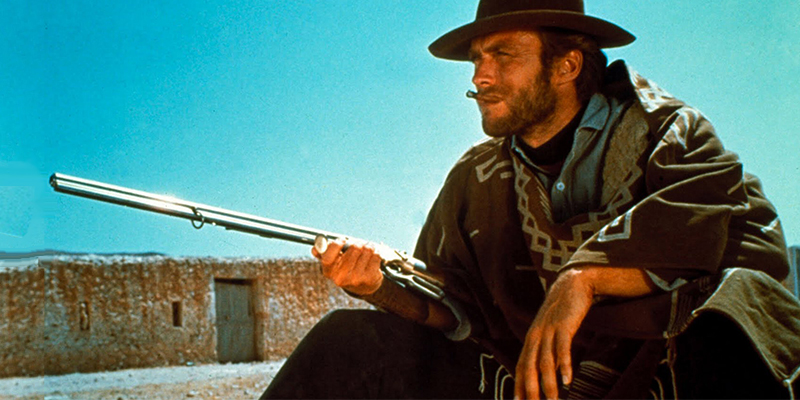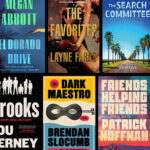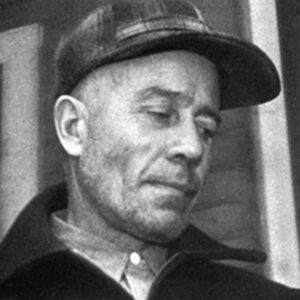Did you know that bounty hunting is legal in just two countries in the world? Only the United States and its former territory, the Philippines, allow it. The uniquely American profession has a long tradition and history but not a definitive origin story. It’s the stuff that myths are made of.
Slave patrol or slave-catching in the 1700s, which the National Association for the Advancement of Colored People (NAACP) considers the precursor to modern policing in America, also arguably started bounty hunting.
Bounty means “something that is given generously,” while hunter refers to “a person who hunts game,” according to the Merriam-Webster dictionary. In the 1800s, the term was associated with slave catching but also hunting predatory animals for a bonus.
In 1866, an article published in Jackson Citizen Patriot in Michigan referred to bounty hunters who were trying “to obtain negro recruits and hard money.”
However, in Minnesota, the term was used in the context of hunting for pay or bonus. In 1868, an article in The Winona Daily Republican referred to bounty hunters as people who hunted wolves that were bred for bounty.
Bounty hunting has come a long way since the nineteenth century. Today, bounty hunters are also called fugitive recovery agents, bail enforcement agents, bail enforcers, and fugitive apprehension agents. Their job is to find, arrest, and deliver to jail a person who is free on bail but failed to appear in court.
The Eighth Amendment provides the legal foundation for bail. Defendants who have the means can pay cash bail—a sum of money set by the court—to avoid going to jail while waiting for their court dates. The full amount is returned upon court appearance.
Defendants who don’t have the cash may sit it out in jail or go to a bail bonds agency for help. For a fee of ten percent to thirteen percent of the bail amount, a bail bonds agency acts as surety or guarantor by posting bail on behalf of the defendant. The fee is nonrefundable regardless of whether the defendant is found guilty or not. If that person fails to show up in court (also known as skipping bail), the agency will be responsible for paying the full bail amount to the court.
That’s when the bounty hunter, who works for the bail bonds agency, enters. The bounty hunter finds the fugitive and takes him to the police or sheriff’s department or the appropriate law enforcement agency.
Pop culture has long mythologized and even romanticized bounty hunting. In literature, Elmore Leonard helped popularize the profession when his novel, The Bounty Hunters, was published in 1953. The protagonist, Dave Flynn, an ex-military officer turned bounty hunter, was paid four dollars a day to guide a young lieutenant named R.D. Bowers. Their mission: to hunt down an Apache renegade.
More than a decade later, Philip K. Dick introduced Rick Deckard, a bounty hunter who was literally out of this world, in Do Androids Dream of Electric Sheep? The science-fiction novel was published in 1968, but the story is set in 2021. In Dick’s San Francisco, the sun no longer shines on Earth, and people drive hovercars and use androids as servants. Real animals are rare and prohibitively expensive. Deckard, who hunts down fugitive androids for a living, can only afford electric sheep.
In Hollywood, films like For a Few Dollars More (1965) by Sergio Leone and The Wild Bunch (1969) by Sam Peckinpah immortalized the bounty hunter trope. The former featured a young and charismatic Clint Eastwood as a gunfighter who takes up bounty hunting. Peckinpah’s Western classic featured an ensemble cast of tough guys led by William Holden and an epic gunbattle touted as one of the longest and bloodiest scenes in cinema.
Twenty-seven years later, Eastwood replicated his iconic bounty-hunter ruggedness in the 1992 film Unforgiven as an aging killer who avenges a prostitute for cash bounty. The slow-burn Western earned Eastwood the Oscar Best Actor and Best Director awards.
While bounty hunting is decidedly a staple of the Western genre, Martin Brest’s Midnight Run in 1988 has proven to be the exception to the rule. Robert De Niro plays the bounty hunter and Charles Grodin, a mob accountant and embezzler who jumped bail. As a comedy bromance with a bit of road trip, it’s as far as it could get from other bounty hunter films. It’s also the reason why many people still love it today.
In the age of reality TV, bounty hunting became synonymous with Dog the Bounty Hunter, whose eponymous show ran from 2004 to 2012. Dog, whose real name is Duane Chapman, inspired a slew of similar shows: Big Rig Bounty Hunters (2013-2014), Rocky Mountain Bounty Hunters (2014-2015), Bounty Tank (2023), and Bounty Hunters (2024).
The bounty hunter trope has thrived on both the small and big screens more than in fiction. I learned the hard way that a novel about a bounty hunter was harder to sell than a book about a detective, cop, sheriff, or FBI agent. It took me almost three decades to find the right literary agent, editor, and publisher for my Domingo the Bounty Hunter series.
Danger No Problem (book one) and Sunday or the Highway (book two) follow Domingo, a Filipino American bounty hunter, who catches undocumented immigrants whose crimes are a lot more serious than overstaying in the country. As a naturalized, foreign-born U.S. citizen, Domingo develops great empathy for his quarries who fail to navigate a broken immigration system. Thomas & Mercer published both books simultaneously in September.
Among the few bounty hunter novels in the thriller and action genres, Janet Evanovich’s Stephanie Plum series blazed a trail when it was introduced in 1994. The bounty hunter trope has always been about white men. Stephanie, a sassy white female bounty hunter was the first of her kind.
David Tromblay’s Sangre Road introduced Moses Kincaid, a Ho-Chunk military veteran, perhaps the first Native American hero in the trope.
I, too, subverted the bounty hunter trope with Domingo, the first Filipino American and brown immigrant hero in the trope. I hope readers agree that singular characters like Domingo, Plum, and Kincaid enrich pop culture by bringing a fresh perspective and diversity to the world of bounty hunters.
***


















